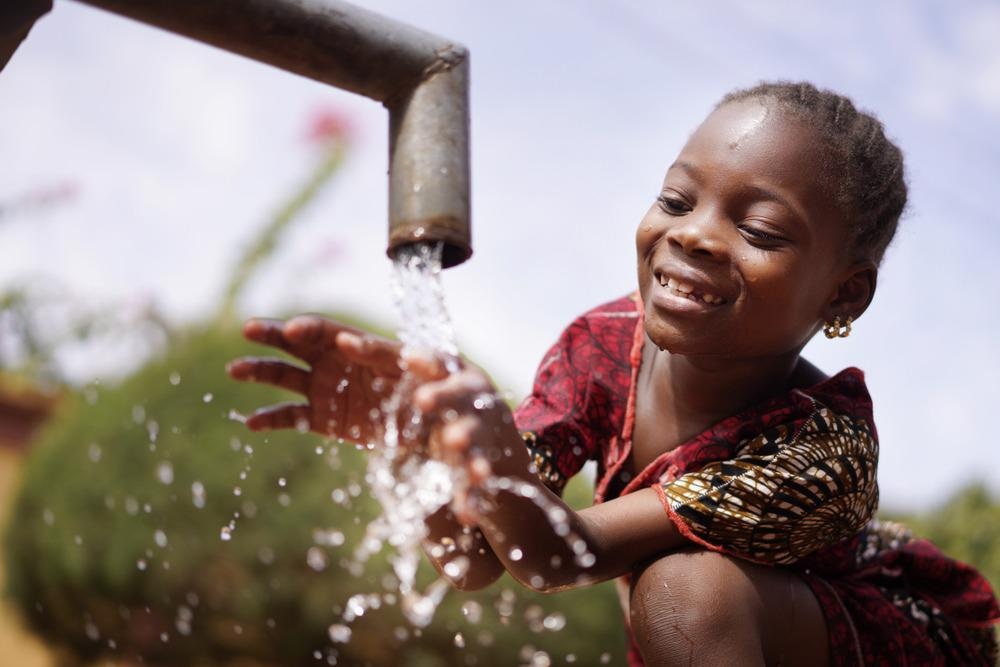The water available for each living person on the Earth is dropping every day. Yet, a huge portion of the planet’s water is in the air. To tap into this easily overlooked resource, companies have developed technologies that extract water from the air.

Image Credit: Riccardo Mayer/Shutterstock.com
An efficient technology that runs entirely on solar energy has been brought to the market by Source, which captures water from the air, to create mineralized, purified drinking water. A new project collaborating with Source will even involve the reuse of drinking bottles in Saudi Arabia. Could this be the next step for water scarcity amid climate change?
Currently, around 90 percent of our water supplies derive from surface water such as reservoirs and rivers. Yet, there is a major untapped resource in the atmosphere, and we need more water.
Across the world, there is a major imbalance between water supply and demand. Water scarcity is a global health issue that affects more than 3 billion people globally. The amount of fresh water available for each person has dropped by a fifth over the past two decades, according to data reported by the Food and Agriculture Organization of the United Nations, and around 1.5 billion people suffer drought or extreme water scarcity. The influence of climate change on increased desertification and intensified weather makes matter worse.
Starting Source to Capture Water from the Sky
Renewable drinking water company Source has developed a technology, fueled by renewable energy, that obtains mineralized drinking water from air even in dry, arid settings. It can also be used in a range of conditions, even those with low sun and humidity levels.
Based in Arizona state, Source (previously known as Zero Mass Water) offers a solution to water scarcity through its Atmospheric Water Generation (AWG) technology, which extracts water out of the air. The fundamentals of the technology are not entirely new, but previously required huge amounts of energy, only working in places of high humidity. The company Source claims to have overcome these limitations.
Source was founded by Cody Friesen, an associate professor of materials science at Arizona State University. He saw potential in this idea since the air has six times as much water as the world’s rivers. He developed panels that use fans to draw the air in through a hygroscopic, water-absorbing material that traps the water vapor from the air. The vapor is then converted to liquid and collected, before being filtered and mineralized to make ideal drinking water. As a result, Source’s hydropanels effectively make, store, and dispense clean, mineralized water that does not need to be purified further to be drunk.
Bringing Sustainable Bottled Water to Saudi Arabia
Crucially, the energy source of the hydropanels is solar and is able to work in areas of low humidity, high pollution, and even remote conditions such as the middle of the desert. The technology could be very useful for hotels and resorts located in arid, hot countries.
A Saudi Arabian company, The Red Sea Development Company (TRSDC), has completed a contract with Source for 2 m plastic-free water bottles a year, for their eco-resort established in the sustainable tourism market. TRSDC will become the first place in the world to serve bottled water sourced from sunlight and air while collaborating with Source.
During the project, the facility will have the capacity to produce 2 million 330 ml bottles each year. The glass bottles will be reused, being refilled on-site to support a circular economy. Through bottling and harvesting water derived from Source’s hydropanels, this will generate zero-carbon and zero single-use plastic bottles. To keep operations renewable too, the plant where the water will be bottled will also be powered by solar energy.
John Pagano, CEO of TRSDC announced: “As we push the boundaries and set new global standards for sustainable development, we are adopting cutting-edge technology and business practices that are in harmony with nature. Our partnership with SOURCE Global makes us the only destination in the world with truly regenerative bottled water and reflects our commitment to operate using only renewable energy and free of single-use plastics.”
SOURCE® Hydropanel
Video Credit: SOURCE/YouTube.com
Hydropanels for the Future?
There are other atmospheric water generators out there in the market, but Source’s products are unique in being completely powered by sunlight, making them self-sufficient and independent of other infrastructures, such as connection to the power grid.
The company’s project with TRSDC in Saudi Arabia will be powered with renewable, solar power from the very beginning; from the collection of the water by the hydropanels to the bottling of the sustainable drinking water with re-used bottles.
Despite these achievements, some water experts are skeptical about Source’s AWG technology. They comment that it is not efficient enough and too costly to become a solution we can appropriately scale to properly tackle water scarcity. Whether these hydropanel solutions could solve water shortages across the world remains to be seen. This will require more tests and implementation by organizations across the globe in the years ahead.
References and Further Reading
Out of thin air: can hydropanels bring water to parched communities? [Online]. The Guardian. Available at: https://www.theguardian.com/environment/2021/oct/05/hydropanels-water-from-air
How hydropanels work [Online]. Source. Available at: https://www.source.co/how-hydropanels-work/
TRSD and source global PBC join forces to set new standard for sustainable bottled water [Online]. The Red Sea.
More than 3 billion people affected by water shortages, data shows [Online]. The Guardian. Available at: https://www.theguardian.com/environment/2020/nov/26/more-than-3-billion-people-affected-by-water-shortages-data-shows
Food and Agriculture Organization of the United Nations [Online]. Available at: https://www.fao.org/home/en/
Disclaimer: The views expressed here are those of the author expressed in their private capacity and do not necessarily represent the views of AZoM.com Limited T/A AZoNetwork the owner and operator of this website. This disclaimer forms part of the Terms and conditions of use of this website.